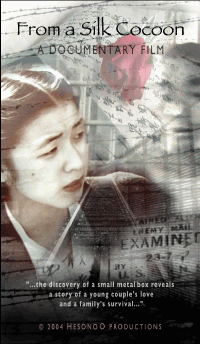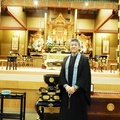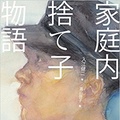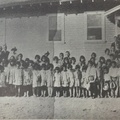I was asked to go to Berkeley in September to interview Satsuki Ina- Sensei, emeritus of California State University Sacramento. (Satsuki Ina is 70 years old).
Ina-san’s mother was born in America, raised in Nagano prefecture, and returned to America before the War. After interviewing Ina-san, I told her that I would like to profile her for Discover Nikkei. A few days after the interview, Ina-san sent two DVD films with Japanese subtitles that were produced by her.
Her first film is titled Children of the Camps. It is a story about Japanese Americans who spent part of their childhood in an internment camp. In the 1990’s, Ina-san gathered several Japanese Americans who had experienced the camps and provided group counseling (for them). This film is a documentary about that group counseling and showed how deep the trauma of their experience in the camps still lives in them even though these Japanese Americans became successful in society after the War. The film was broadcasted in the U.S. by PBS in the same year of its production.
Her second film is titled From a Silk Cocoon (produced in 2006). Experiences of her parents while in the internment camps are shown in this docu-drama.
Though these two films were made several years ago, they have not been introduced in Japan. I want to feature both films here:
From a Silk Cocoon – Ina Satsuki-san’s father Itaru-san was born in 1913 in San Francisco. Soon after his birth, he returned to Japan with his mother, was educated there, and then returned to America. Ina-san’s mother Shizuko-san (maiden name is Mitsui) was born in 1917 in Seattle. When Shizuko was 3 years old her mother passed away. Because of this, she was sent to Japan and spent from ages 3 to 13 in Nagano. She returned to America where she graduated from high school, and then she went back to Japan again.
Itaru and Mitsuko met in 1939 at the Golden Gate World Fair that was held at Treasure Island, San Francisco. Shizuko was dispatched as a “Silk Girl” from Japan to demonstrate [the art of] silk reeling at the Fair. The title of the film From a Silk Cocoon connotes the starting point of Mitsuko’s life in America.
After Shizuko finished her duty as a “Silk Girl,” she returned to Japan, and then came back to America to get married. Satsuki’s parents married in April, 1941 in San Francisco. On December 7, 1941, (In Japan, it was December 8th) Japan attacked Pearl Harbor and the War started.
For Shizuko, life in the camps started in April 1942, she was to bare and raise two children. The first son Kiyoshi was born in December 1942 at the Topaz camp in Central Utah. The first daughter Satsuki was born in May 1944 at the Tule Lake camp in Northern California.
In February 1942, President Roosevelt issued an executive order that effected all people of Japanese ancestry, who then lived on the West Coast, that eventually forced them to be evacuated. By April 1942 approximately 120,000 people had been sent to the internment camps.
In 1943, the American government began registering adults through a so called “loyalty registry [sic]” by asking if they will swear loyalty to the U.S. and if they are willing to serve in the U.S. Army.
Young male adults of Japanese ancestry who answered that they will swear loyalty to the U.S. were registered for the draft and went from the internment camps to fight in the war. However, there were approximately 5,000 Japanese-Americans that answered “no” to the loyalty registry [sic] and rather chose to return to Japan with renunciation of U.S. citizenship.
Satsuki’s parents chose renunciation of their U.S. citizenships. The film From a Silk Cocoon portrays the agony and hardship of life that the Ina family experienced in the internment camp through Itaru’s and Shizuko’s letters and diaries that were written in Japanese.
For Itaru the question itself was in question and he refused to answer because to him he’s “unable to answer the loyalty question without the right of freedom.” Willing to be sent to Japan from the internment camp, he renounced his U.S. citizenship. It was the same for Shizuko.
In fact, the U.S. Government accepted the renunciation of U.S. citizenship by Nisei. The Government thought it expedient to deport those who renounced their U.S. citizenship rather than keeping those who were in dissension in the camps.
Those who chose to renounce their U.S. citizenship believed that Japan would win the war and wanted to return to Japan. However, those same people started withdrawing their desire of returning to Japan when it was certain that Japan had lost the war and they received the news about serious food and housing shortages in Japan.
There is a poignant scene in From a Silk Cocoon given that this film was produced by an American, Itaru’s HAIKU expressing what was going on inside of him, were first presented in Japanese, accompanied with images, and then presented the content in English. Right before an official decision of whether or not he would be repatriated, Itaru wrote this:
(Itaru’s HAIKU)
Hiashinobu, Madoari Shinpan Matsu Osore
Soukanka Shakuhouka, Yukini Sasayakesu
Due to a petition that was submitted by Itaru’s friend, repatriation to Japan for Mr. and Mrs. Ina and the two children who were born in the camps, was withdrawn. The Ina family was released from the internment camp and then went to Cincinnati, Ohio.
Nearly one full year passed after the war when the Ina family was finally released in Crystal City, Texas. It was June 1946.
In September, when I first met Satsuki in Berkley, she expressed the desire to have From a Silk Cocoon broadcast on NHK. At that time, I didn’t know what to say. However, after watching From a Silk Cocoon, I strongly want people to watch this film in Japan because I thought this was the best picture that depicted in detail what Nikkei had been through.
To be continued (Japanese only) ... >>
© 2014 Shigeharu Higashi






